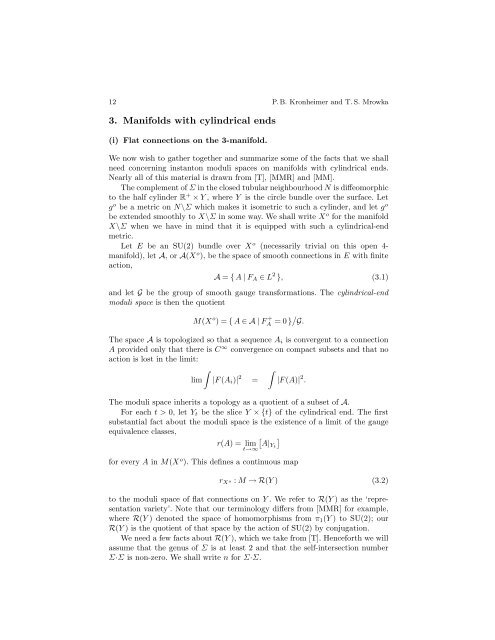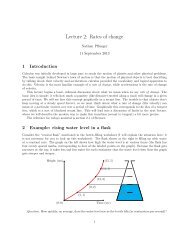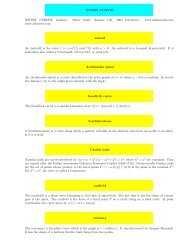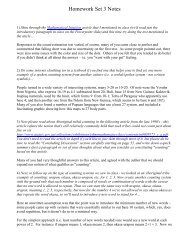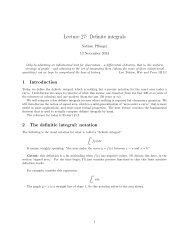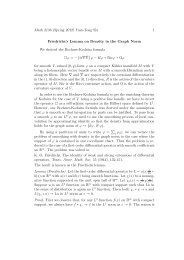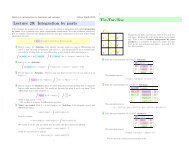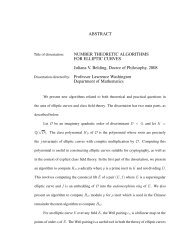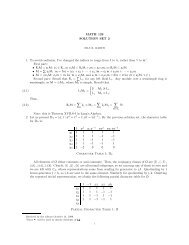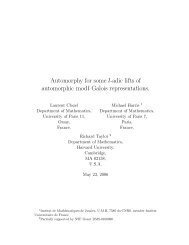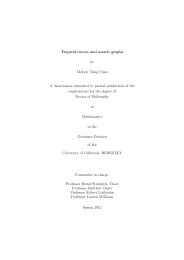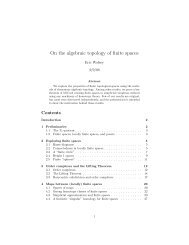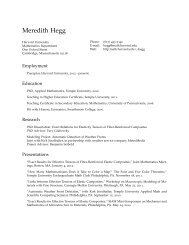Gauge theory for embedded surfaces, II
Gauge theory for embedded surfaces, II
Gauge theory for embedded surfaces, II
You also want an ePaper? Increase the reach of your titles
YUMPU automatically turns print PDFs into web optimized ePapers that Google loves.
12 P. B. Kronheimer and T. S. Mrowka<br />
3. Manifolds with cylindrical ends<br />
(i) Flat connections on the 3-manifold.<br />
We now wish to gather together and summarize some of the facts that we shall<br />
need concerning instanton moduli spaces on manifolds with cylindrical ends.<br />
Nearly all of this material is drawn from [T], [MMR] and [MM].<br />
The complement of Σ in the closed tubular neighbourhood N is diffeomorphic<br />
to the half cylinder R + × Y ,whereY is the circle bundle over the surface. Let<br />
g o be a metric on N\Σ which makes it isometric to such a cylinder, and let g o<br />
be extended smoothly to X\Σ in some way. We shall write X o <strong>for</strong> the manifold<br />
X\Σ when we have in mind that it is equipped with such a cylindrical-end<br />
metric.<br />
Let E be an SU(2) bundle over X o (necessarily trivial on this open 4manifold),<br />
let A, orA(X o ), be the space of smooth connections in E with finite<br />
action,<br />
A = { A | FA ∈ L 2 }, (3.1)<br />
and let G be the group of smooth gauge trans<strong>for</strong>mations. The cylindrical-end<br />
moduli space is then the quotient<br />
M(X o )={A∈A|F +<br />
A =0} G.<br />
The space A is topologized so that a sequence Ai is convergent to a connection<br />
A provided only that there is C∞ convergence on compact subsets and that no<br />
action is lost in the limit:<br />
<br />
lim |F (Ai)| 2 <br />
= |F (A)| 2 .<br />
The moduli space inherits a topology as a quotient of a subset of A.<br />
For each t>0, let Yt be the slice Y ×{t} of the cylindrical end. The first<br />
substantial fact about the moduli space is the existence of a limit of the gauge<br />
equivalence classes,<br />
<br />
r(A) = lim A|Yt<br />
t→∞<br />
<strong>for</strong> every A in M(X o ). This defines a continuous map<br />
rXo : M →R(Y) (3.2)<br />
to the moduli space of flat connections on Y . We refer to R(Y ) as the ‘representation<br />
variety’. Note that our terminology differs from [MMR] <strong>for</strong> example,<br />
where R(Y ) denoted the space of homomorphisms from π1(Y ) to SU(2); our<br />
R(Y ) is the quotient of that space by the action of SU(2) by conjugation.<br />
We need a few facts about R(Y ), which we take from [T]. Hence<strong>for</strong>th we will<br />
assume that the genus of Σ is at least 2 and that the self-intersection number<br />
Σ·Σ is non-zero. We shall write n <strong>for</strong> Σ·Σ.


